8 have author last names that start with K have author last names that start with K

Great Medical Discoveries offers a short illustrated history of the city’s contribution to the medical sciences, from the medieval period to the present day, when it is home to some of the world’s leading large scientific institutions. In charting this remarkable history, the book showcases twenty discoveries across the centuries. In the mid-twentieth century, for instance, Oxford led the field of experimental medicine, and William Harvey, Thomas Willis, and Thomas Sydenham all gained eponymous status with their pioneering research into the workings of the human body. In the mid-seventeenth century, Dorothy Hodgkin’s development of x-ray crystallography earned her a Nobel Prize in Chemistry. Meanwhile, the work of epidemiologist Richard Doll saved millions of lives by making clear the long-term dangers of smoking and the benefits of quitting.
Great Medical Discoveries traces these and other examples of groundbreaking research—from the scientific application of anesthetics to new treatments for hemophilia and life-saving advances in neurosurgery—and shows how they form part of a wider tapestry of work that has helped shape the medical sciences and improve human health.
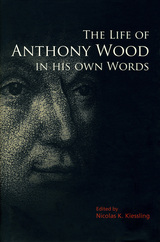
Anthony Wood (1632–95) was an English historian and antiquary best known for his books on the history and antiquities of the University of Oxford as well as Athenae Oxonienses: an Exact History of all the Writers and Bishops who have had their Education in the University of Oxford from 1500 to 1690. Some of the revelations in Athenae Oxonienses were considered scandalous at the time, and a copy of the manuscript was famously burned in protest in front of the Bodleian Library in 1693. Wood’s autobiography reflects his life-long devotion to historiography, and consequently it paints a lively picture of many well known figures in seventeenth century England.
Wood made more contributions to biography, bibliography, and the history of the University and city of Oxford than any other writer before that time. As a result, The Autobiography of Anthony Wood is brimming with information of all kinds, from famous people—including Christopher Wren, John Locke, the physician John Lower, the defiant Catholic Ralph Sheldon, the mathematician John Wallis, and a host of Oxford heads of colleges, vice-chancellors and chancellors—to descriptions of significant events—such as skirmishes between parliamentarian and royalist forces in the 1640s, the atmosphere of Oxford during the parliamentarian occupation, the return of King Charles II in 1660, and the anti-Catholic movement of the 1670s. Based directly upon original sources, this critical edition of Wood’s autobiography offers an entertaining and revealing look at one of the most interesting and turbulent periods in Oxford’s past.
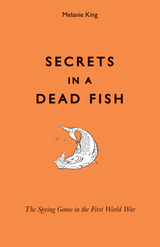
Throughout World War I, spymasters and their networks of secret agents developed many clever—and sometimes comical—methods of covert communication. Stacks of bread in a bakery window, puffs of smoke from a chimney, and even woolen pullovers were all used to pass on secret messages that were decipherable only to the well-trained eye. Drawing on the memoirs of eight spies, Melanie King divulges these and other tricks of the trade while sharing details from their astonishing stories. Among her informants are British intelligence officers working undercover in Germany and France, including a former Metropolitan police officer who once hunted Jack the Ripper; a German secret service officer codenamed “Agricola;” an American newspaperman; and an Austrian agent who disguised himself during his career as everything from a Jewish peddler to a Russian officer.
A fascinating compendium of clever and long-forgotten ruses—interspersed with the stories of the spies themselves—Secrets in a Dead Fish sheds new light on the shadowy world of Great War espionage.
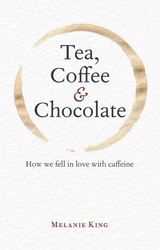
In her mouthwatering new book, Melanie King offers a concise cultural history. All three beverages hail from faraway places: tea came first from China, coffee from the Middle East, and chocolate from Central America. Physicians and politicians alike were quick to comment in newspapers and popular periodicals on their supposed perils or health benefits. Readers learn that coffee was recommended in the seventeenth century as protection against the bubonic plague. Tea was thought to make women unattractive and men “unfit to do their business,” while a cup of chocolate was supposed to have exactly the opposite effect on the drinker’s sex life and physical appearance. As consumption of these newly discovered delicacies grew, merchants seized on the opportunity by setting up coffee houses or encouraging ever-more-elaborate tea-drinking rituals.
Filled with fascinating and often funny anecdotes—from a goatherd whose flock became frisky after eating coffee berries to a duchess with a goblet of poisoned chocolate, Tea, Coffee & Chocolate shows how the rowdy initial reception of these drinks forms the roots of today’s enduring caffeine culture.
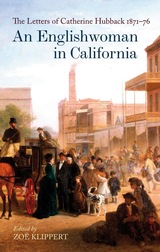
A niece of Jane Austen and a novelist herself, Catherine Hubback was fifty-two years old when she left England for America. She travelled to California on the Transcontinental Railroad and settled in Oakland, on the eastern shore of San Francisco Bay. Her son Edward shared her household and commuted by ferryboat to a wheat brokerage in the City.
In letters to her eldest son John and his wife Mary in Liverpool, Catherine conveys her delight – and her exasperation – at her new environment. She portrays her neighbours with a novelist's wry wit and brings her English sensibility to bear on gardening with unfamiliar plants and maintaining a proper wardrobe in a dry climate. She writes vividly of her adventures as she moves about a landscape recognizable to present-day residents, at a time when boats rather than bridges spanned the bay, and hot springs were the main attraction in the Napa Valley. In an atmosphere of financial unrest, she writes freely of her anxieties, while supplementing Edward's declining income by making lace and teaching the craft to other women. She recalls her 'prosperous days' in England, but finds pleasure in small things and assuredly takes her place in a society marked by great disparities in wealth.
In addition to transcriptions of the letters, this highly readable edition offers pertinent information on many of the people and places mentioned, explanatory notes, and striking illustrations. The introduction places the letters in context and tells the story of Catherine Hubback, whose life evolved in ways unprecedented in the Austen family.
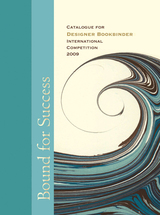
Published to celebrate the winning entries in the prestigious 2009 Designer Bookbinders International Bookbinding Competition held at the Bodleian Library, Bound for Success presents nearly four hundred of the most skillful and creative examples of contemporary bookbinding across the world.
Designer Bookbinders is one of the foremost international bookbinding societies, and this competition catalog features a remarkable range of styles, materials, and approaches to an ancient technique, attracting top binders from around the world. Beautifully designed, Bound for Success is as stunning a book as the bindings it displays. This showcase of the best in modern bookbinding is likely to become a collector’s item among aficionados of bookbinding--as well as a handsome addition to any personal library.
Exhibition Dates:
12 June - 1 August 2009 Bodleian Library, Oxford
18 September - 13 December 2009 Boston Public Library
12 February - 6 March 2010 Bonhams & Butterfields, San Francisco
19 May - 31 July 2010 The Grolier Club of New York
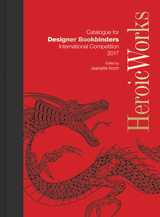
Heroic Works collects the full 184 entries from the 2017 competition, highlighting the twenty-eight winning bindings and offering a veritable showcase for the creativity and craftsmanship of the international bookbinding community. As beautifully designed as many of the bindings it displays, this showcase of the best in modern bookbinding will become a collector’s item among aficionados of bookbinding—as well as a handsome addition to any personal library.
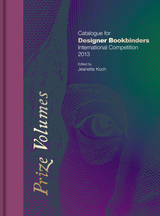
Prize Volumes collects the full 250 entries from the 2013 competition, highlighting the twenty-eight winning bindings and offering a veritable showcase for the creativity and craftsmanship of the international bookbinding community. As beautifully designed as many of the bindings it displays, this showcase of the best in modern bookbinding will become a collector’s item among aficionados of bookbinding—as well as a handsome addition to any personal library.
READERS
Browse our collection.
PUBLISHERS
See BiblioVault's publisher services.
STUDENT SERVICES
Files for college accessibility offices.
UChicago Accessibility Resources
home | accessibility | search | about | contact us
BiblioVault ® 2001 - 2024
The University of Chicago Press









